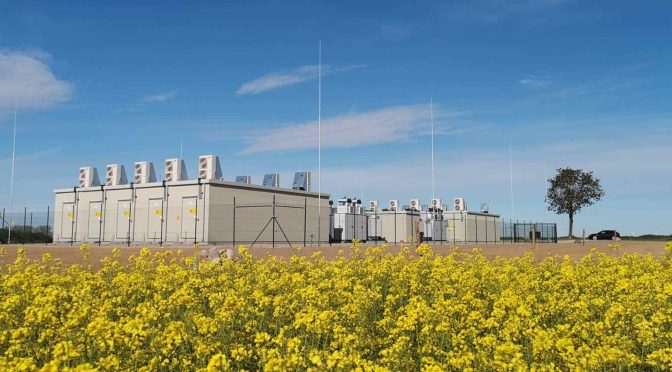The average storage system runs only once every two days. The electricity market lacks incentives to fully use its capacity.
The solution to encourage the use of these batteries could involve new reforms of its electricity market, according to BloombergNEF. “Having electricity prices that change at different times of day, something many provinces are testing, could create arbitrage in energy trading that storage systems can take advantage of” to the detriment of thermal plants.
China is the country with the most installed renewable energy in the world. Among these renewable energies, photovoltaics has an important role. So much so that it is rapidly manufacturing battery storage systems to meet the moments of demand when photovoltaic plants do not produce. The problem is that it manufactures so many batteries that in the end they are not used.
In the long term, however, generating so much energy that it is only available for a few hours a day will end up causing serious problems in a network designed to distribute energy continuously, 24 hours a day. For that not to happen, China must use its battery park much more.
Chinese energy storage capacity, a segment dominated by lithium-ion batteries, soared to 44 GW at the end of June, which is 40% more than at the beginning of the year. There it is nothing. This figure has already exceeded the country’s 2025 target and has overtaken electric cars as the fastest growing battery market.
China is a renewable energy colossus, both in terms of solar and wind energy. China is on track to reach 1,200 GW of installed wind and solar power by the end of 2024, six years ahead of the government’s target. China’s installed solar power generation capacity increased by 55.2% in 2023. The country built more than 216 GW of solar power this year, while by the end of 2023 it had already installed more than 609 GW of solar power.
With such generation capacity, enormous storage capacities are needed if a good part of the energy generated is not to be wasted. The solution is to manufacture storage batteries.
And what is the problem? The incentives of the Chinese authorities. China wants to reduce its dependence on fossil fuels and encourages the installation of renewable energies through incentives and aid. But in order to operate and qualify for aid, large wind and solar parks must have storage spaces. This means that battery parks are built, but it does not encourage their use. Many plants have to comply and nothing more.
The idea is that the batteries can supply energy during peak demand or when renewables do not produce (at night, with a lack of wind). However, with a very low and fixed price of energy, thermal power plants, especially coal-fired ones, are used during peak demand.
Let us remember that China is the largest producer and importer of coal in the world and has more coal production capacity under construction than the rest of the world. It is building coal plants with the capacity to generate more than 136 GW and has another 255 GW in the announcement phase or in the process of obtaining permits.
But the capacity is largely unused. According to the Chinese National Energy Agency (NEA), in the area supplied by State Grid Corp. of China, which covers more than 80% of the country, the average system was in use for 390 hours and had 93 charge and discharge cycles in the first six months of the year. This means that the batteries ran once every two days and were idle 91% of the time.

